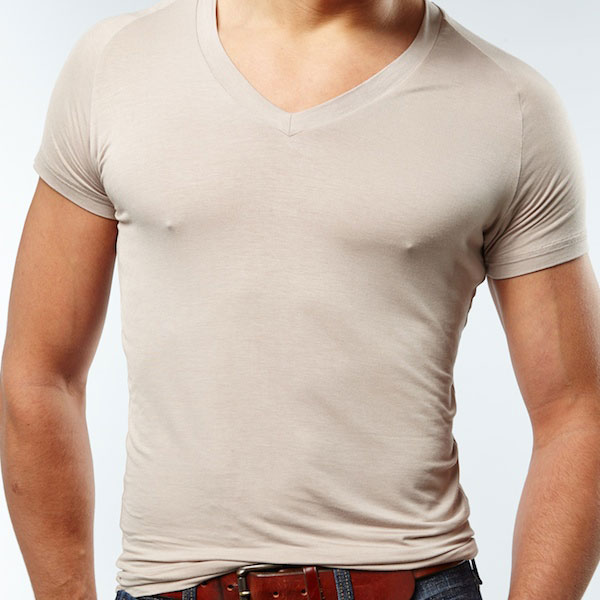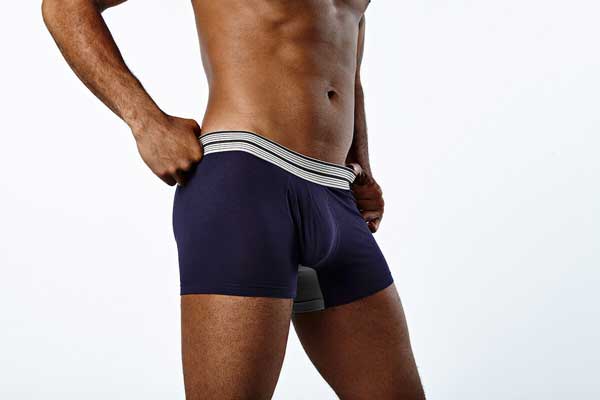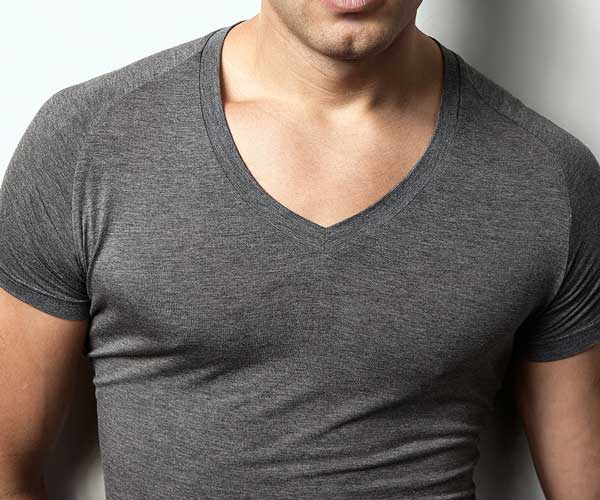Customer Spotlight:
Mr. Davis
Customer Spotlight:
Mr. Davis
As any consumer knows, there are plenty of clothing options out there, from shirts to socks, cotton to polyester. The retail apparel industry is a crowded space, making a differentiating factor—whether it’s branding, customer service, or the product—an absolute must. For Mr. Davis, that factor is found in the fabric.
A Budding Business
Founded in 2013, Mr. Davis has its roots in bamboo. At first, bamboo viscose was just one of a dozen fabrics that Jeremy Chrysler, founder of the business, was using for early prototypes. The fabric stood out as being far more comfortable than other options though. After buying incredibly comfortable bamboo viscose bedsheets, Jeremy was hooked.
Once he’d decided on the fabric, Jeremy worked through a dozen or so iterations to refine the measurements for an undershirt that guys would actually want to wear all day. After a year of prototyping, the design was ready for production.
But launching an entire product line requires a major investment up front. Riskily jumping right into the world of retail with little cash and an unknown demand wasn’t feasible. Fortunately, Kickstarter—a platform for funding ideas—helped the idea of Mr. Davis to become reality.
“We used Kickstarter to launch our first undershirt—the Tone V Neck,” said John McClain, COO of Mr. Davis. “Our successful campaign allowed us to gauge demand and get direct, customer feedback. It also allowed us to go straight into production with an existing customer base.”
Trying the Idea on for Size
Following the campaign’s better-than-expected outcome, a key decision was whether to become a wholesaler or retailer. Wholesalers typically sell in bulk to retailers who act as a sort of middleman that sells to the customer. Wholesaling provides access to a larger audience, and it’s far more predictable in terms of revenue and demand.

But the experience of having direct access to customers via Kickstarter proved to be powerful. The answer was definitive. Direct-to-consumer retail was the way to go.
“Cutting out the middleman has been huge for us, since the raw material, the bamboo viscose, is expensive,” said John. “If we were a traditional wholesaler, one undershirt would need to retail for around $40. Since our undershirts are meant to be worn hard, we wanted to offer high-quality, well-made products at a price that would allow for repeat purchases. A middleman would force us into prices that were too high.”
The major perks of selling directly to the customer are two-fold. Rather than marking up the price twice to accommodate both retailer and customer, it’s only a single markup. Additionally, selling direct allows for direct, real-time feedback from customers. “We’ve made several subtle refinements in the product based on just talking to our customers,” said McClain. “For example, changing the cut of our sleeves by about a centimeter immediately made the shirts more comfortable to guys with bigger arms.”
Taking Off
Since getting off the ground in 2013 and launching the undershirt you’d never want to take off, Mr. Davis has grown steadily. The team, now four strong, launched another product line, underwear, via an even more successful Kickstarter campaign last year.

“In the fall of 2015, we went back to Kickstarter to launch the best underwear campaign,” said John. “We prototyped for 18 months and beta tested with nearly 100 customers, but we were still nervous to produce thousands of underwear without knowing demand. It was a huge hit, and once again gave us the cash to begin production for our second product line.”
A VIP program was quickly implemented as well to keep customers engaged. On a customer-determined interval of months, Mr. Davis would deliver an order of undershirts at a discounted price and with free shipping. It turned out to be a rewarding program for both parties, and it became an invaluable tool for better forecasting revenue and growth.
“Through our VIP program, we were able to add more value by lowering the price for subscribers since they were committing to future shipments,” said John. “It’s been huge—about 50% of the people purchasing from the site sign up. And it’s pretty common for a first-time customer to sign up after they purchase.”
Quality at the Core
The emphasis on quality extends into Mr. Davis’ own operations. Their team covers essential functions of the business, from fulfillment to web development, but, like the very product they offer, they’re more than happy to pay professionals for quality service.

“It’s important to know what you do best and to pay professionals to do what you can’t. Everything from hiring an accountant, inventory management software, or hiring a consultant that does Google AdWords, so you can focus on execution and growth,” said John. “Pay the money to have people doing the right things, the right way. All the stuff our team isn’t great at, whether it’s photography, design, or accounting, we work with tools and people that specialize on that every day.”
And, as John’s comments imply, outsourcing doesn’t always involve people—Mr. Davis uses apps, too. It’s one thing to have others work for you, and another to have the professional tools to quickly do the work yourself. That’s exactly what Ordoro is all about; delivering comprehensive, easily-usable shipping and inventory tools to get the job done.
“We chose Ordoro because it is based in the United States and has incredible customer service. It’s great to pick up the phone during OUR business hours and chat with someone in our same timezone,” said John. “Our development team loves the API as well. The user interface is super-clean, modern and easy to use. We can pick, pack and ship a package in under 2 minutes from the time we receive the order—pretty awesome!”
Garments Guaranteeing Growth
Mr. Davis has seen some fantastic success within the last three years because of their unwavering commitment to the brand and core mission. From the get-go, they’ve always been centered around superior, affordable products. And with an unrelenting focus on product quality, quality products come naturally—especially when they’re made of the best materials.
“We’ve experienced tremendous growth over the past three years, but the brand hasn’t changed too much. We continue to want to deliver the best-made product using the best fabrics the world has to offer at great prices,” said John. “Experiencing growth and positive, customer feedback has definitely made us sit back and ask, ‘Well, what else can we make?’ But the challenge is not getting too far ahead of ourselves and sticking with our core mission.”